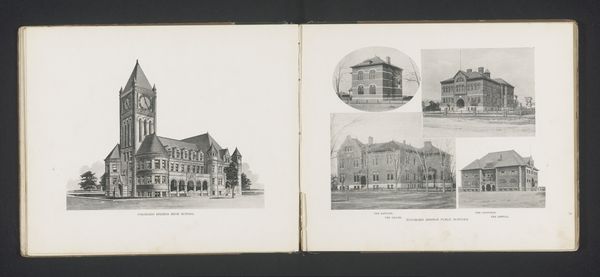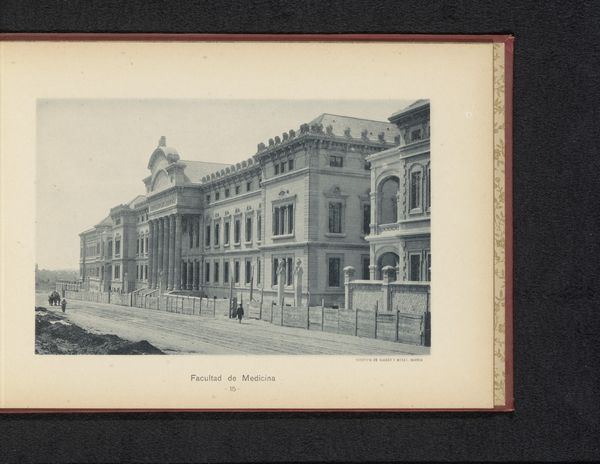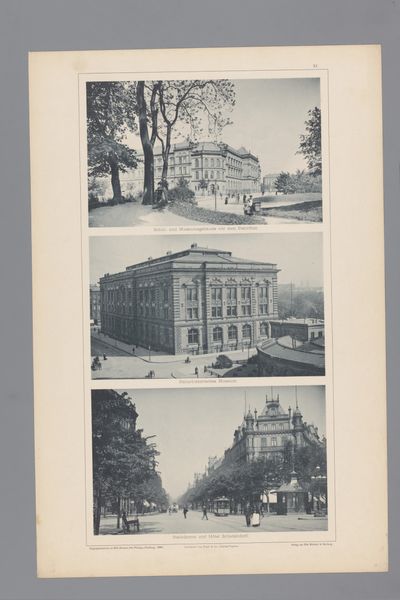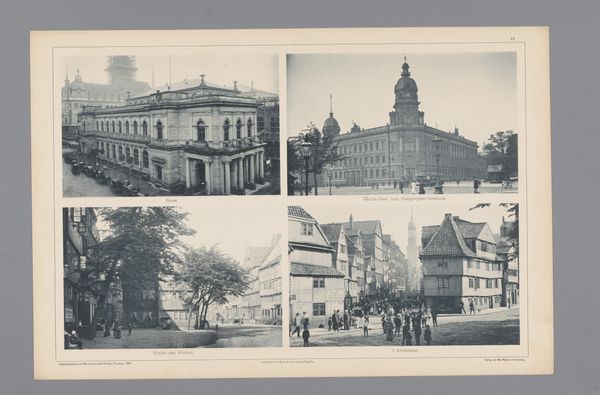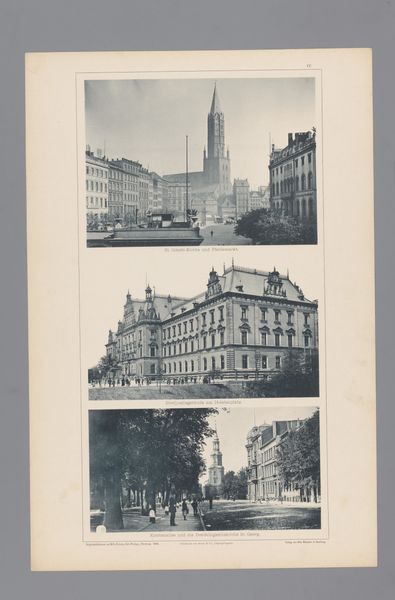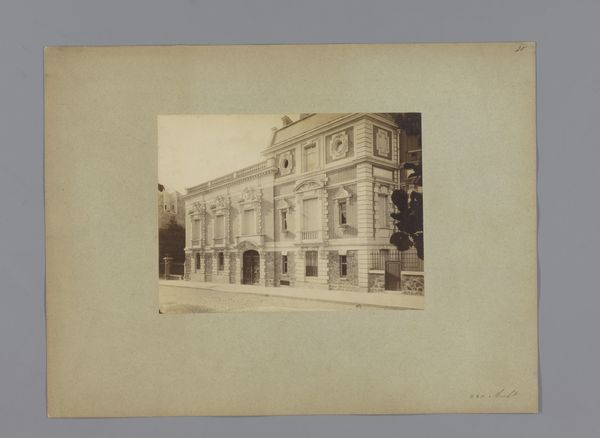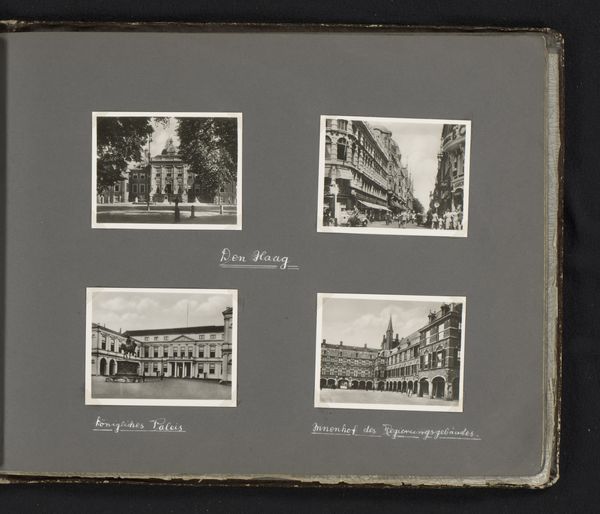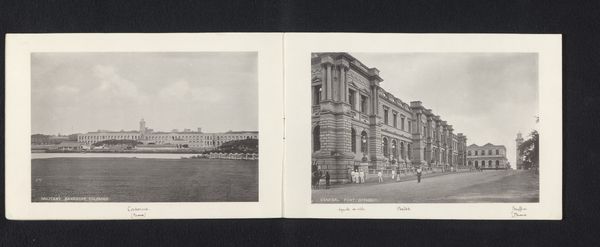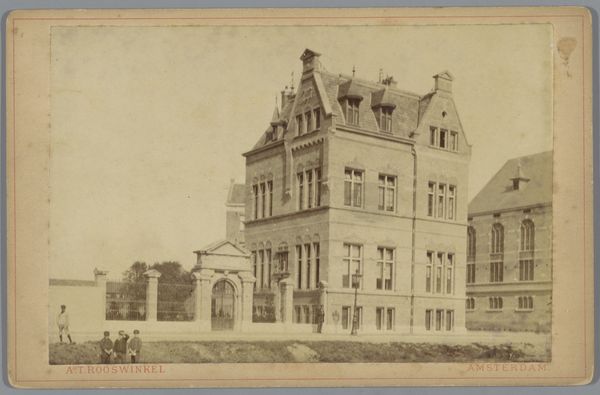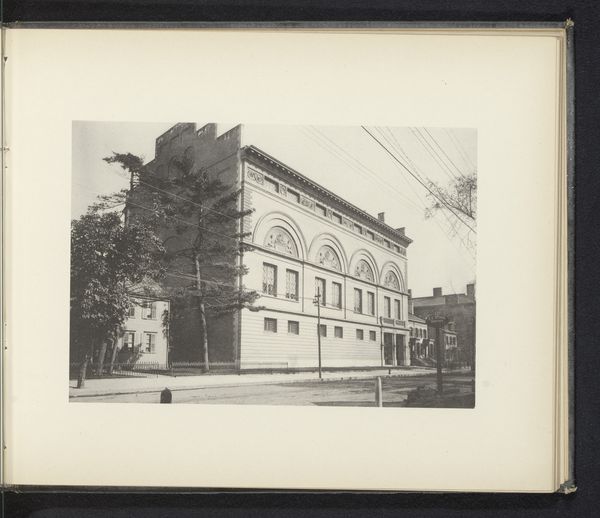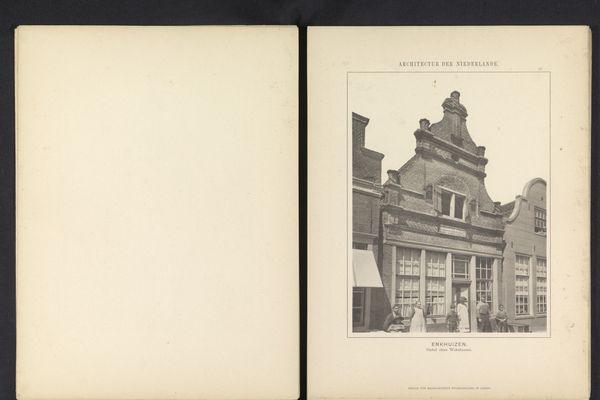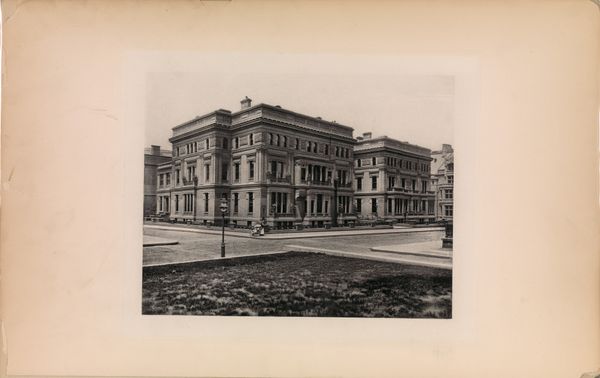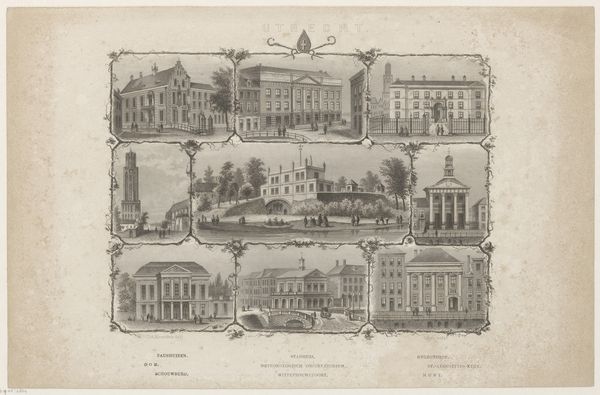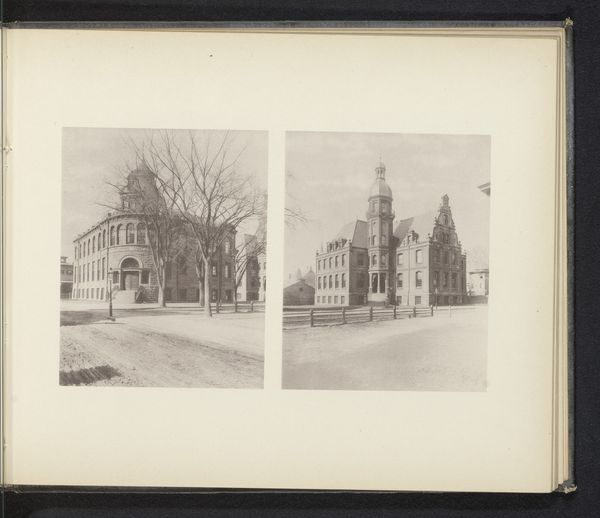
Vier gezichten op Hamburg, afgebeeld het stadstheater, de turnhal, het concertgebouw en de Kunsthalle 1894
0:00
0:00
print, photography
# print
#
german-expressionism
#
photography
#
cityscape
#
realism
Dimensions: height 330 mm, width 490 mm
Copyright: Rijks Museum: Open Domain
Curator: This is "Four Views of Hamburg, depicting the city theater, the turnhalle, the concert hall and the Kunsthalle", a photographic print created around 1894. Immediately, it feels like a formal record. What strikes you first about it? Editor: It has a very civic feel. These are clearly meant to be proud portrayals of Hamburg’s cultural and recreational infrastructure, captured through very straightforward, almost clinical photography. The whole thing carries a certain weight, a sense of order and, well, Germanness. Curator: Absolutely, and I think the context is important here. Late 19th-century Germany was rapidly industrializing, and civic pride, the construction of these kinds of cultural institutions was directly tied to projecting an image of progress, of civilization. It speaks to power. Editor: Power definitely, but also perhaps a yearning for legitimacy? Look at the neoclassical architecture used, those Greek columns on the city theater. It's a clear reach back to an older, arguably more 'refined', European aesthetic. But I do wonder who this image was for. A tourist perhaps, keen on the sights? Or more of an internal facing document to solidify social bonds and collective self-esteem? Curator: Likely both audiences were intended. This was an era of picture postcards and affordable printed material, aimed at circulating images of national identity, and bolstering national prestige in global exhibitions. These institutions reinforced a hierarchical social order and served as monuments of middle class civic ambition. It projects a controlled vision, downplaying the social anxieties inherent in modernization. Editor: Exactly! It highlights what the burgeoning bourgeoisie could access – theatre, concerts, art – and quietly omits any other realities in Hamburg. The clean, neat streets devoid of poverty are very telling in that respect. Curator: It serves as a testament to institutional authority, the creation of cultural touchstones meant to unify a diverse and expanding urban population, and to present Hamburg to the world stage. Editor: Looking at it through a modern lens, there's something subtly melancholic. Maybe it’s the black and white, the stiffness, but it serves as a quiet reminder of a time when urban aspiration looked quite different, and those institutions presented then are not fully as accessible for many as they still should be. Curator: A worthwhile reminder of how curated images can shape collective memory, even back then. Thank you for these relevant, eye-opening connections!
Comments
No comments
Be the first to comment and join the conversation on the ultimate creative platform.
